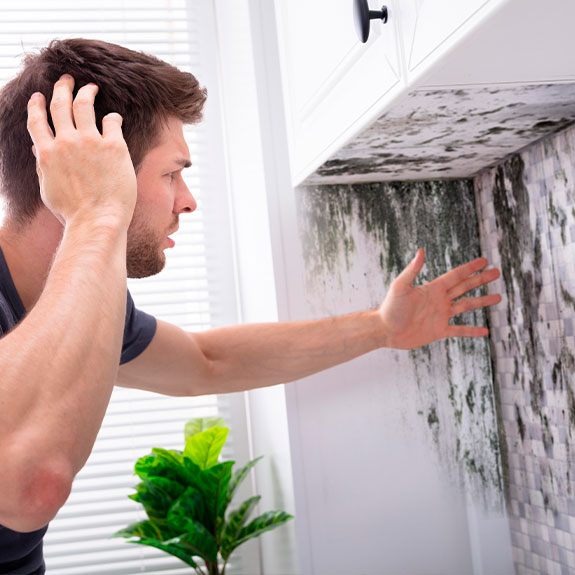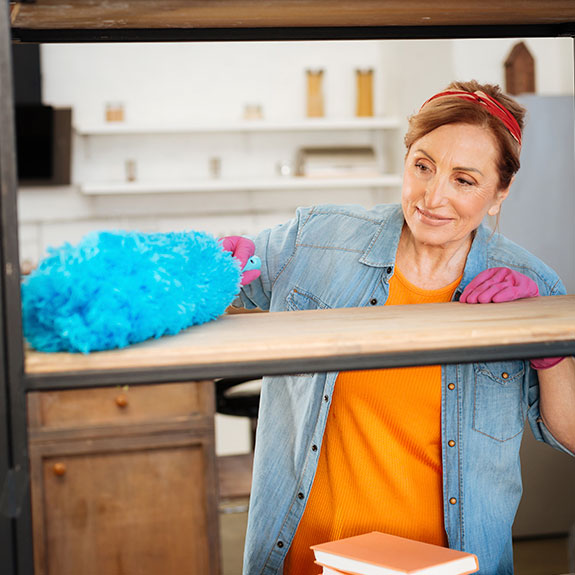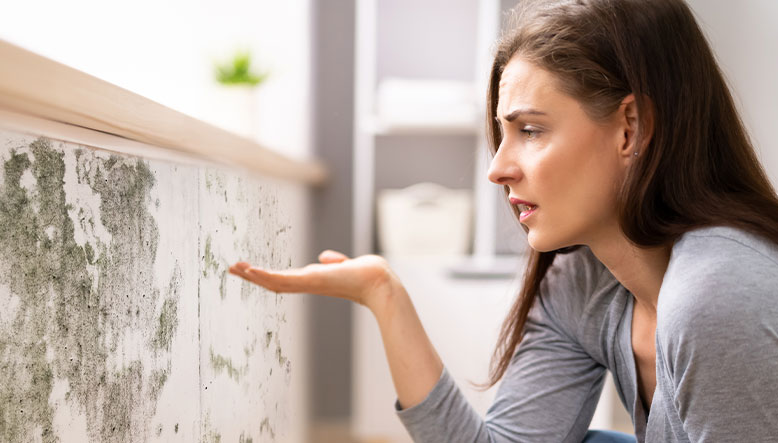Mold on walls, ceilings and other surfaces is a common problem that affects both the aesthetics and health of a home. It can cause bad odors, structural deterioration and respiratory problems in sensitive people. To avoid its appearance, it is essential to control humidity, improve ventilation and take long-term preventive measures.
In this guide, we explain how to prevent the formation of mold in any space in your home.
Why does mold form at home?
Mold is a microscopic fungus that grows in damp, poorly ventilated environments. It spreads through airborne spores and can appear on walls, ceilings, furniture and even clothing.

The main causes of mold growth are:
- Excessive humidity: Condensation on windows, ceilings and walls is an ideal breeding ground for mold.
- Water leaks: Leaks, broken pipes and dampness in the foundation can generate mold in a short time.
- Poor ventilation: Lack of air circulation favors the accumulation of humidity in the environment.
- Cold temperatures: The thermal shock between the interior and exterior of the house can cause condensation.
- Porous materials: Surfaces such as wood, plaster and textiles can retain moisture and encourage mold growth.
Knowing these causes, we can apply strategies to prevent the formation of mold at home.
Control humidity at home
Mold thrives in environments with relative humidity above 50%, so it is essential to keep it under control. Some effective measures include:
- Use a dehumidifier: Ideal in rooms with high humidity, such as basements, bathrooms and kitchens.
- Avoid drying clothes indoors: If you can’t avoid it, open a window or use a dehumidifier to remove moisture from the air.
- Check for leaks: A leaky faucet or broken pipe can increase humidity without you even realizing it.
- Install humidity sensors: Devices that alert when humidity levels are too high.
- Place natural moisture absorbers: Salt, activated charcoal and bentonite clay help absorb moisture in enclosed spaces.
If you control humidity, you will be eliminating the main cause of mold in your home.
Improve the ventilation of your home
A poorly ventilated house retains moisture in the walls and ceilings, which encourages mold. To avoid this:
- Open the windows every day: 10-15 minutes of daily ventilation reduces indoor humidity.
- Leave space between furniture and walls: It prevents air from being trapped and promotes the accumulation of humidity.
- Use exhaust fans in bathrooms and kitchens: They help eliminate water vapor produced by showering and cooking food.
- Keep interior doors open: Especially in small rooms without windows.
- Use ceiling fans or portable fans: They promote air circulation and prevent the accumulation of humidity in one place.

If a room always smells musty, it is a sign that it needs better ventilation.
Controls temperature and prevents condensation
Sudden temperature changes can cause condensation, which facilitates mold growth. To avoid this:
- Maintain a stable temperature at home: Avoid large temperature differences between indoors and outdoors.
- Insulate walls and windows well: Use double-glazed windows and check the seals to avoid cold air leaks.
- Avoid placing large pieces of furniture against cold walls: If a wall is cold and unventilated, moisture will accumulate behind the furniture.
- Do not overheat without ventilation: Unventilated heat can generate moisture on cold surfaces.
By reducing condensation, you will prevent mold spores from finding a favorable environment to grow.
Check and repair possible water leaks.
Leaks are one of the main causes of mold. To prevent them, consider the following:
- Inspect the roof and walls after heavy rains.
- Periodically check pipes, faucets and drains for leaks.
- Ensures a good seal on windows and doors to avoid exterior humidity.
- Cleans gutters and downspouts to prevent water accumulation on the roof.
If there is a leak, repair it as soon as possible to prevent mold growth.
Use anti-humidity paints and materials
Porous materials can absorb moisture and become a breeding ground for mold and mildew. To avoid this:
- Apply damp-proof paint on walls and ceilings prone to condensation.
- Use breathable coatings that allow water to evaporate.
- Install waterproofing sealants in areas with high risk of leaks.
If the paint on a wall begins to form bubbles, it may be a sign of hidden moisture.
Keep the house clean and free of mold spores.

Mold spreads through the air and can settle on any surface. To prevent it:
- Clean walls and ceilings with white vinegar to remove mold spores
- Vacuums with HEPA filters to trap airborne mold particles
- Wash carpets and curtains regularly to avoid moisture accumulation.
- Do not accumulate clothes or papers in damp rooms.
If you have had mold before, be sure to clean the affected area thoroughly to prevent it from coming back.
Preventing mold at home not only improves the appearance of your home, but also protects your health and the structure of the building. By controlling humidity, ventilation and temperature, and applying regular maintenance measures, you can effectively keep your home mold-free.
If you already have mold in your home and need to remove it, check out our complete guide for cleaning mold from walls and discover the best solutions to get rid of this problem for good.
Why does mold appear in my house?
Mold forms due to excessive humidity, poor ventilation or water leaks in walls, ceilings or floors.
How can I prevent mold from coming back?
Control humidity with daily ventilation, dehumidifiers and anti-humidity paints, as well as repair leaks if any.
What is the best temperature to prevent mold?
Maintain a stable temperature between 18 and 22°C and avoid sudden changes that generate condensation on the walls.
Can I prevent mold without chemicals?
Yes, with adequate ventilation, white vinegar, baking soda and moisture absorption with activated charcoal or salt.
Can mold affect my health?
Yes, mold can cause allergies, respiratory problems and general discomfort, especially in people with asthma or sensitive immune systems.


